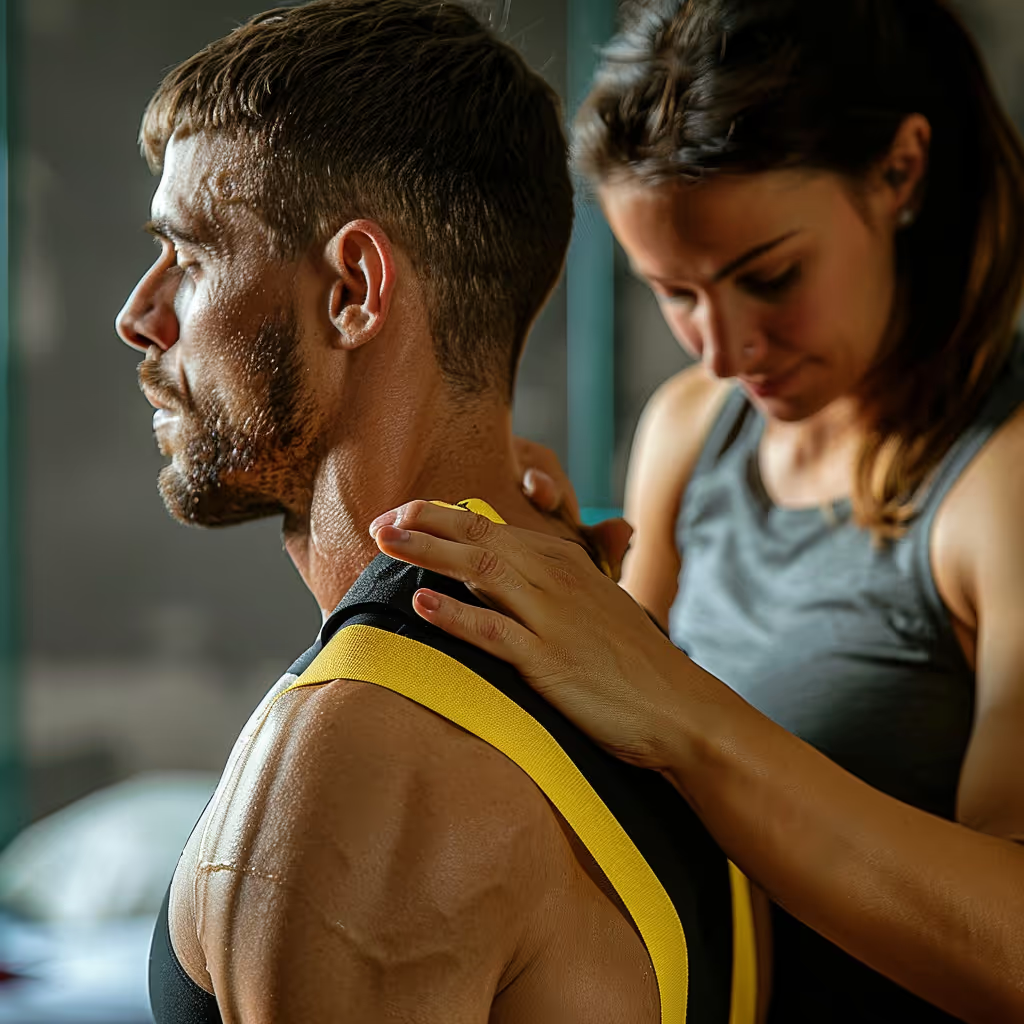Chronic pelvic pain syndrome
Chronic pelvic pain syndrome affects men. It manifests as pain or discomfort in the pelvic region (pelvis and lower abdominal organs) and is accompanied by urinary and/or sexual problems.
What is chronic pelvic pain syndrome?
Chronic pelvic pain syndrome affects men. It manifests as pain or discomfort in the pelvic region (pelvis and lower abdominal organs) and is accompanied by urinary and/or sexual problems.
What causes chronic pelvic pain syndrome?
There are no clear causes, but several factors can increase the risk of developing chronic pelvic pain syndrome:
- Physical and/or psychological stress;
- Pelvic surgery (e.g. vasectomy, prostatectomy, etc.);
- Pelvic trauma (e.g. fracture, fall on buttocks, accident, etc.);
- Repeatedly lift loads while holding your breath;
- Sitting for long periods;
- Cycling regularly;
- Certain inadequately treated medical conditions (e.g. bacterial prostatitis);
- Compulsive sexual activity or masturbation.
What are the symptoms of chronic pelvic pain syndrome?
- Constant or intermittent pain in one or more of the following areas: anus, rectum, penis (especially glans), pubis, perineum, coccyx, lumbar;
- Pain during or after ejaculation;
- Pain or relief after a bowel movement;
- Pain when urinating;
- Increased frequency of urination during the day and/or night;
- Feeling of urgency to urinate;
- Feeling of not being able to completely empty the bladder when urinating or the rectum when having a bowel movement;
- Difficulty tolerating sitting;
- Decreased libido.
How to diagnose chronic pelvic pain syndrome
Diagnosis is made by subjective and physical examination in the clinic. There are also medical tests that can be prescribed by a doctor to determine, among other things, whether an infectious or inflammatory condition is also present.
How physiotherapy can help chronic pelvic pain syndrome
Your perineal rehabilitation physiotherapist will first carry out a complete assessment (e.g. lifestyle habits, posture, breathing, pelvic floor muscle contraction/relaxation, etc.) to determine the cause(s) of your symptoms.
Based on the assessment results, your physiotherapist will:
- Mobilize the muscles and soft tissues in the abdomen and pelvic floor;
- Provide you with specific exercises to do at home to address the cause of the problem;
- Teach you how to properly manage your daily activities and hobbies to optimize healing;
- Provide advice on lifestyle habits, posture, and movements.
- Refer you, if necessary, to a doctor or other healthcare professional.
When to seek physiotherapy for chronic pelvic pain syndrome
You should consult a physiotherapist if you have symptoms as described above or if your doctor has already ruled out any other cause that may be responsible for your pain.
You do not need to see a doctor before consulting a physiotherapist. If your condition requires you to see a doctor, your physiotherapist will be able to tell you.
What to do at home for chronic pelvic pain syndrome
- Practice a stress management activity (e.g. mindfulness meditation, yoga, walking, other pleasant activity);
- Stay active every day and vary your positions frequently
- (e.g. sitting, standing, lying down, etc.);
- Reduce consumption of beverages that can irritate the bladder (e.g., tea, coffee, alcohol, soft drinks, etc.);
- Reduce consumption of foods that can irritate the bladder (e.g. hot peppers, artificial sweeteners, citrus fruits, etc.).
To learn more...
You can check out the podcast
Episode #23 discusses perineal and pelvic rehabilitation: .
Find the episode on YouTube :
Click below to listen to episodes on podcast platforms:

https://open.spotify.com/episode/4K8MhluZYTYDzmFNn2dDAt?si=a7a8e4a1a64f4cbd
(4).png)
Videos in this category
Other conditions
Hip osteoarthritis is a normal wear and tear of the hip joint. Osteoarthritis is often described as the wearing away of cartilage between our bones. While this is true, it involves more than just cartilage. Cartilage is a tissue that acts like a cushion between the surfaces of our bones, allowing our joints to glide smoothly and move with ease.
It is a normal wear and tear of the knee joint. Osteoarthritis is often described as the wearing away of cartilage between our bones. While this is true, it involves more than just cartilage. Cartilage is a tissue that acts like a cushion between the surfaces of our bones, allowing our joints to glide smoothly and move with ease.
It is a normal wear and tear of the joints in the lower back vertebrae. Osteoarthritis is often described as the wearing away of cartilage between our vertebrae. While this is true, it involves more than just cartilage. Cartilage is a tissue that acts like a cushion between the surfaces of our vertebrae, allowing them to glide smoothly and move with ease.
A bursa is like a small, very thin, fluid-filled sac found in several joints throughout the body. This small sac acts as a cushion in the joint and lubricates structures that are exposed to more friction.
It is an inflammation of the subacromial bursa in the shoulder joint.
It is a tissue that surrounds the shoulder and allows the shoulder bone to stay in place within the joint. The capsule helps to stabilize the joint.
Cervicalgia is a general term to describe neck pain that does not have a specific cause, such as an accident or sudden movement. Cervicalgia is therefore synonymous with ''I have a pain in my neck and nothing in particular happened''.
In both injuries, there is pain felt in the neck that then radiates into the arm, or vice versa.
It is a significant stretch or tear of the muscle fibers in the groin or inner thigh muscles.
It is a significant stretch or tear of the muscle fibers in the hamstring muscles located at the back of the thigh.
This is a significant stretch or tear of the muscle fibers in the calf muscles (soleus and gastrocnemius).
This is a significant stretch or tear of the muscle fibers in the quadriceps, which is the large muscle at the front of the thigh.
Book an appointment now
We offer a triple quality guarantee: optimized time, double physiotherapy assessment, and ongoing expertise for effective care tailored to your needs.


Our clients' satisfaction is our priority.
At Physioactif, excellence defines our approach. But don't take our word for it, see what our patients are saying.
Discover our physiotherapy clinics
We have multiple locations to better serve you.
Blainville
190 Chem. du Bas-de-Sainte-Thérèse Bureau 110,
Blainville, Quebec
J7B 1A7
Laval
Montreal
St-Eustache
Vaudreuil
21 Cité-des-Jeunes Blvd. Suite 240,
Vaudreuil-Dorion, Quebec
J7V 0N3
Book an appointment now

